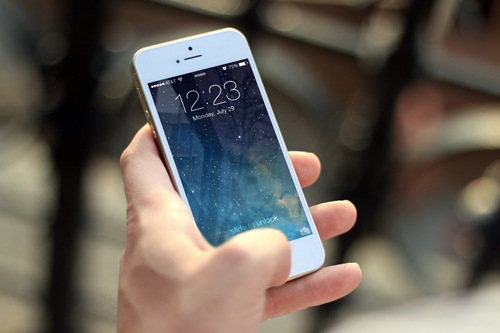
(JEShoots, Pixabay)
12 May 2017. Results of lab tests sent to doctors' smartphones can speed the release of emergency room patients by nearly a half-hour, according to a newly published study. Findings from research conducted by a team of emergency physicians and colleagues at a University of Toronto hospital appear in the 9 May issue of the journal Annals of Emergency Medicine, published by American College of Emergency Physicians.
The researchers, led by Aikta Verma, an emergency physician at Sunnybrook Health Sciences Centre, affiliated with University of Toronto, sought to determine any time advantages of using smartphones to receive test results. Of particular interest were reductions in waiting time for patients, who often need results of lab tests before they can be released. In some cases, patients' lab tests are completed and available, but their doctors are occupied with other duties and not able to retrieve the results, while their patients wait.
Verma and colleagues tested a possible solution to the problem, sending lab test results to emergency physicians' smartphones once the findings are available, a process known as push-alert notification. In this case, researchers focused on a particular test, for the presence of troponin proteins in a blood sample. A troponin test is usually ordered when a patient shows signs of a heart attack, such as chest pain or shortness of breath. The presence of troponin proteins in blood is an indicator of damage to heart muscle, with higher troponin levels suggesting greater damage to the heart.
In their study, the Toronto team over a 9-month period randomly assigned emergency department physicians at Sunnybrook Health Sciences Centre to receive patients' troponin test results by push-alerts on their smartphones once results were available. For comparison, the same physicians received no such alerts for similar patients when troponin tests were ordered during that period. The researchers looked primarily at the amount of time taken from final results of troponin tests to the decision to discharge the patient, but also the total amount of time spent by patients in the emergency department.
The results show patients of emergency physicians receiving troponin test results on their smartphones were released quicker than comparable patients whose doctors did not receive lab tests on their phones. Of the 1,554 patients discharged after complaining of chest pain during that time, the median amount of time between test results and discharge overall was nearly 80 minutes.
Patients whose doctors received lab results via push alerts on their phones took a median of 68.5 minutes, while doctors not receiving push alerts needed 94.3 minutes to discharge their patients, a difference of almost 26 minutes. The total amount of time spent in the emergency department, however, did not vary that much between patients with doctors receiving push alerts, and patients whose doctors received lab test results through other means, with median times of 328 and 345 minutes respectively.
"Physicians who received troponin results on their smartphones," says Verma in an American College of Emergency Physicians statement, "made the decision to discharge their patients with chest pain a median of 26 minutes faster than physicians without troponin push-alert notifications. She notes that, "For many patients, waiting for lab results that determine if they stay in the hospital or go home is the hardest part of the ER visit."
More from Science & Enterprise:
* * *
Please share Science & Enterprise ...
Source: Smartphone Test Results Speed Hospital Patient Release
No comments:
Post a Comment